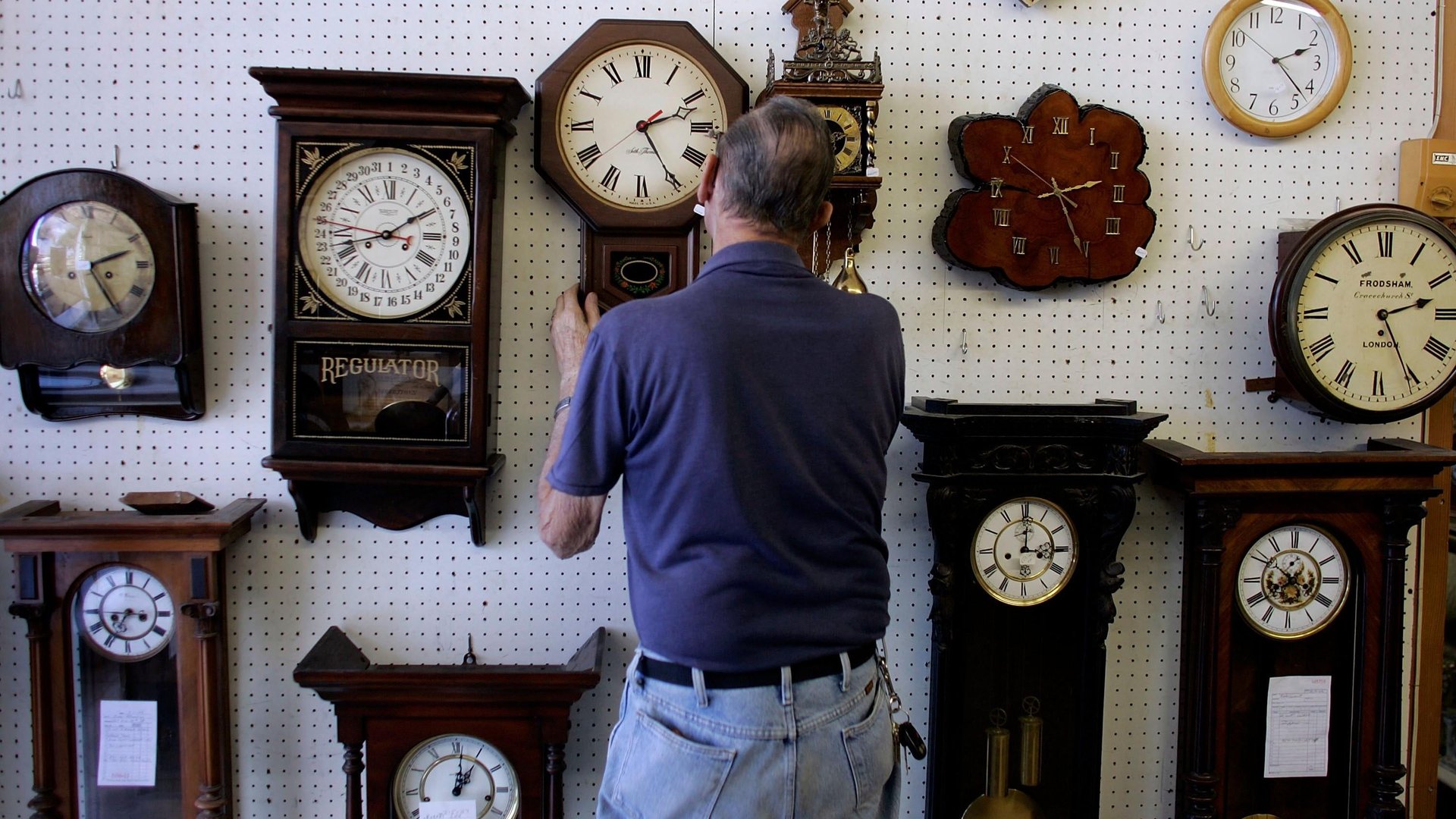As clocks fall back, America's plan to make daylight saving time permanent has made no progress
Daylight saving finds opponents in farmers, filmmakers, and sleep scientists

The semestrial ritual of changing the clocks is approaching once more for millions of Americans, as daylight saving time ends on Nov. 6. But if some lawmakers have it their way, it’ll be the last time that happens.
Every year, on the second Saturday in March, the clocks spring forward an hour, robbing people of an hour of sleep. On the first Sunday of November, they fall back, giving them an extra hour of sleep. This phenomenon, dubbed “daylight saving time,” aims to give people more hours of sunlight. On Nov. 6 at 2am, daylight saving officially ends across most parts of the US.
Three US states—Arizona, Hawaii, and a handful of territories are exceptions—do not have daylight saving time (DST), having applied an exemption to the Uniform Time Act.
Next year, this time-shifting dance could cease to exist altogether. In March, the Senate unanimously voted to pass the Sunshine Protection Act, which would make daylight saving time permanent. If the bill passes the House, where it’s currently “held at desk,” as there’s a similar legislation under consideration—and is signed into law by president Joe Biden, once the clocks change in March, they won’t change back. Permanent DST would take effect on Nov. 5, 2023.
Daylight saving time, by the digits
143: countries that have used DST at some point
70: countries around the world that still practice daylight saving, mostly in the northern hemisphere
110: Canada has used DST for the most number of years
1: Bangladesh has used DST for the least number of years
35%: Americans who want to keep resetting their clocks twice a year, according to a Monmouth University poll
59%: Americans who want DST to be permanent, according to a YouGov survey
19: states that have enacted legislation or passed resolutions to provide for year-round daylight saving time, if Congress allows it, and if neighboring states adopt it
Charted: US states that observe daylight saving time
A brief history of daylight saving time
1784: Benjamin Franklin didn’t invent daylight saving, but in a tongue-in-cheek letter for Journal de Paris, he recommends changing the clock to get more sun to save money on candles and lamp oils
1895: New Zealand-based entomologist George Hudson proposes a two-hour shift to get more sunshine hours to go bug hunting after work
1907: British architect William Willett suggests setting the clocks ahead 20 minutes on each of the four Sundays in April, and switching them back by the same amount on each of the four Sundays in September, to save on electricity, fuel, candles, and so on.
1908: Daylight saving is first introduced in the world in one Canadian region—Port Arthur, Ontario
1916: Two years into World War I, Germany and Austria become the first countries to adopt DST to save fuel for war efforts. Within weeks, the UK, France and others followed suit
1918: The Standard Time Act and DST are both introduced in the US
1942: US Congress passes a federal daylight saving law with the caveat that it’ll end six months after the war ends. After that, cities and states decide their own time zones
1966: Uniform Time Act creates one format to adopt daylight saving across US states
1973: energy shortage leads the president Richard Nixon and Congress to enact national, year-round DST.
1975: the US reverts to the regular May-October DST period
2007: President George W Bush signs into law an official daylight saving time period change to what it is today
2021: Sunshine Protection Act proposed making DST permanent
Who opposes daylight saving time?
The US Department of Transportation, which oversees the federal daylight saving rules, supported its enactment to boost productivity and conserve energy. Promoters of DST are in abundance. They make the economic case that more daylight hours lead to more movement, benefitting industries like retail, tourism, golf, barbeque, and candy, and therefore the whole economy. But energy savings seem to be marginal—heating and cooling even go up sometimes—and not all businesses see perks.
Here’s a non-exhaustive list of industries and individuals who don’t love daylight saving time:
🚜 Farmers: Agriculture jobs rely on sunrise and dew, which don’t change with the clocks. DST inconveniences them by delaying harvests, milking times, and more. And if they choose to continue working on their orchestrated schedule, their labor has to wait around longer to start work and leave an hour earlier according to the clocks, and the civil markets open an hour later.
🎬 Movie makers: People are less likely to go to a dark movie hall in bright daylight. Some say it killed off the drive-in theaters, with numbers dropping from 4,000 in the mid-60s to just over 300 now. Evidence points to DST hitting TV ratings, too.
🏫 Schools: Moving a sunshine hour from the morning to the evening means school kids have to wait for buses in the dark, increasing risk of crime and accidents. Teens, who have a natural delay in their body clocks, may struggle with education. (There’s one upside: participation in afterschool sports programs have dramatically increased.)
💼 Business people: The cost to interstate and international commerce has not been thoroughly studied and calculated.
🧑⚖️ Criminals: Sleepy judges tend to dole out longer sentences.
😴 Sleep experts: The “DST effect” when clocks first change causes sleep deprivation and fatigue because it messes with peoples’ circadian rhythms. Old people, young children, and pets especially struggle to adjust. Research has shown that there are more workplace injuries and motor vehicle accidents on the first Monday after the change. The lack of sleep at the start of DST has even been linked to an higher risk of depression, heart attacks, miscarriages in women undergoing IVF treatments, and even cancer.